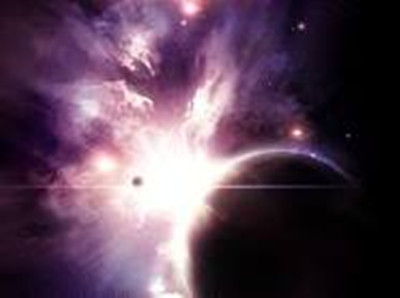In his book Cosmos, the late scientist Carl Sagan talks aboutthe way in which the earth is regularly struck by material fromouter space.
已故科學家卡爾·薩根在著作《宇宙》中敘述了外太空物體如何有規律和地球發生碰撞。
These collisions with space debris can beminor–as in a shooting star on a summer night–or amazinglydestructive, as in the collision that probably killed off thedinosaurs.
太空垃圾和地球碰撞的機率很小,就像夏夜劃過流星,破壞性卻很大,這種碰撞可以令恐龍滅絕。
Thankfully, the biggies are extremely rare.
值得慶幸的是,這種機率太渺茫了。

Sagan makes the point that the most dangerous collision facing us now, however, is one thatmight be mistaken for something else:a nuclear attack.
薩根闡述的觀點是目前我們面臨的最危險的是碰撞而非人們誤解的核戰。
He warned that thinking an asteroid isactually an ICBM could result in the worst possible destruction–an unintended war.
他提醒人們,事實上,行星就像洲際彈道導彈,可能產生意料外破壞性極大的戰爭后果。
Was this just paranoid thinking? Unfortunately, no.
這僅僅是偏執思維嗎?不幸地是,無獨有偶。
Carl Sagan is no longer with us, but intestimony before congress just last year, a United States Air Force brigadier general warned thatjust such a thing almost happened in June of two thousand and two.
去年,一位美過空軍準將在國會的一份證詞中稱類似的事情發生在2002年6月。
That’s when a meteoroid entered the earth’s atmosphere over the Mediterranean and was picked up by U.S. early-warning satellites on the lookout for high-altitude explosions and incoming missiles.
美國預警衛星在監測高空爆炸物和來襲導彈時發現一顆流星穿破地球大氣層,降落在地中海地區。
The alarming object falling from the sky was recognized for what it was, this time.
而這次人們確認從天而降令人惶恐的物體究竟是什么。
The generals’point, though, was that we never know where space junk will fall.
準將指出我們無法確定太空垃圾降落在什么地方。
Turn the globe by just a fewhours earlier on that day in June and the meteoroid would have been over the border of Pakistanand India–exactly where everyone was fearing a nuclear attack.
如果六月的這天,地球轉動退回到幾小時前,流星降落的地方就正好是巴基斯坦和印度的交界處,世人唯恐發生核戰的交界地。
We’ve been lucky so far.
迄今為止,我們都還很幸運。
But Carl Sagan’s warning came perilously close to becoming a prophecy and a harmless natural event in the sky, to triggering a terrible event here on earth.
但是,卡爾·薩根的提醒很可能是可怕的預言,本來平常的天空自然事件很可能引發地球災難。












